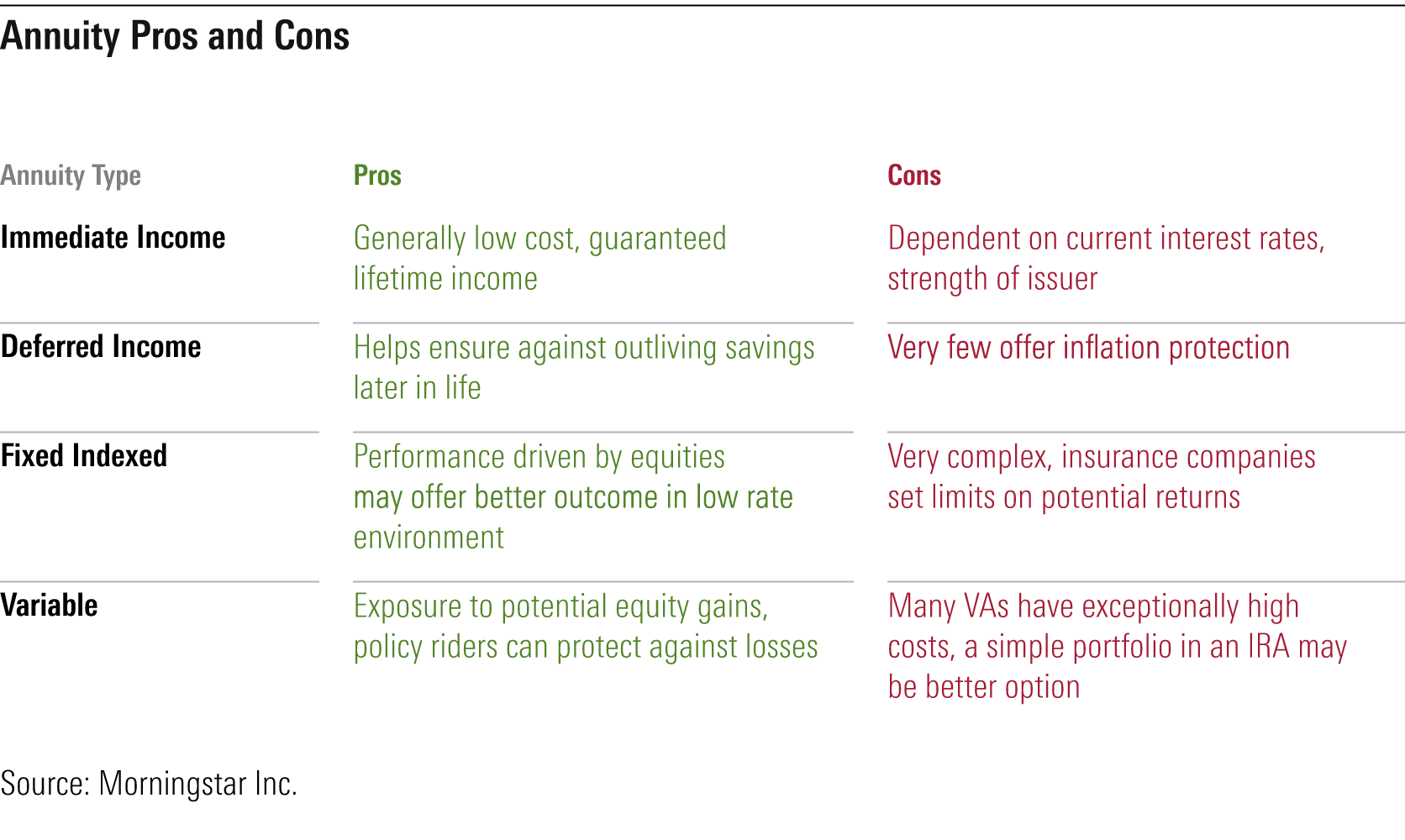All Categories
Featured
Table of Contents
Just as with a taken care of annuity, the owner of a variable annuity pays an insurance provider a round figure or collection of payments in exchange for the assurance of a series of future settlements in return. As stated above, while a fixed annuity grows at a guaranteed, continuous price, a variable annuity grows at a variable price that depends upon the performance of the underlying financial investments, called sub-accounts.

Throughout the build-up phase, possessions spent in variable annuity sub-accounts grow on a tax-deferred basis and are tired just when the agreement owner takes out those revenues from the account. After the buildup stage comes the income phase. In time, variable annuity properties need to theoretically raise in worth until the contract proprietor decides she or he would love to begin taking out cash from the account.
One of the most considerable concern that variable annuities usually present is high cost. Variable annuities have several layers of fees and expenses that can, in aggregate, develop a drag of up to 3-4% of the agreement's worth yearly. Below are the most common fees linked with variable annuities. This cost makes up the insurance company for the risk that it assumes under the terms of the contract.
Analyzing Strategic Retirement Planning A Comprehensive Guide to Investment Choices What Is Variable Vs Fixed Annuity? Benefits of Choosing the Right Financial Plan Why Choosing the Right Financial Strategy Can Impact Your Future How to Compare Different Investment Plans: Explained in Detail Key Differences Between Fixed Vs Variable Annuities Understanding the Key Features of Fixed Vs Variable Annuity Who Should Consider Strategic Financial Planning? Tips for Choosing Variable Annuity Vs Fixed Annuity FAQs About Planning Your Financial Future Common Mistakes to Avoid When Choosing a Financial Strategy Financial Planning Simplified: Understanding Your Options A Beginner’s Guide to Fixed Annuity Or Variable Annuity A Closer Look at How to Build a Retirement Plan
M&E expense fees are calculated as a percentage of the agreement worth Annuity issuers hand down recordkeeping and other management prices to the contract proprietor. This can be in the kind of a flat annual cost or a percentage of the agreement value. Administrative charges may be included as component of the M&E danger fee or may be assessed independently.
These costs can range from 0.1% for easy funds to 1.5% or more for proactively taken care of funds. Annuity contracts can be customized in a number of means to serve the specific needs of the agreement owner. Some usual variable annuity motorcyclists include guaranteed minimum buildup benefit (GMAB), assured minimum withdrawal benefit (GMWB), and ensured minimal income advantage (GMIB).

Variable annuity contributions give no such tax deduction. Variable annuities tend to be extremely inefficient vehicles for passing wide range to the future generation because they do not take pleasure in a cost-basis modification when the initial agreement proprietor passes away. When the proprietor of a taxable financial investment account passes away, the expense bases of the financial investments kept in the account are adapted to reflect the marketplace costs of those investments at the time of the owner's death.
Breaking Down Tax Benefits Of Fixed Vs Variable Annuities A Comprehensive Guide to Deferred Annuity Vs Variable Annuity Defining the Right Financial Strategy Benefits of Choosing the Right Financial Plan Why Choosing the Right Financial Strategy Matters for Retirement Planning Fixed Index Annuity Vs Variable Annuity: Explained in Detail Key Differences Between Fixed Vs Variable Annuity Pros And Cons Understanding the Rewards of Variable Annuity Vs Fixed Indexed Annuity Who Should Consider What Is A Variable Annuity Vs A Fixed Annuity? Tips for Choosing Annuity Fixed Vs Variable FAQs About Planning Your Financial Future Common Mistakes to Avoid When Choosing a Financial Strategy Financial Planning Simplified: Understanding Annuities Variable Vs Fixed A Beginner’s Guide to Fixed Index Annuity Vs Variable Annuities A Closer Look at How to Build a Retirement Plan
Therefore, heirs can inherit a taxed investment portfolio with a "tidy slate" from a tax obligation perspective. Such is not the instance with variable annuities. Investments held within a variable annuity do not get a cost-basis change when the original owner of the annuity dies. This indicates that any kind of gathered unrealized gains will certainly be handed down to the annuity proprietor's beneficiaries, along with the linked tax problem.
One significant concern connected to variable annuities is the capacity for disputes of interest that might exist on the part of annuity salesmen. Unlike a financial advisor, who has a fiduciary duty to make investment choices that profit the customer, an insurance policy broker has no such fiduciary obligation. Annuity sales are highly rewarding for the insurance experts that offer them due to high ahead of time sales compensations.

Several variable annuity contracts include language which positions a cap on the percent of gain that can be experienced by specific sub-accounts. These caps avoid the annuity owner from totally joining a section of gains that could or else be enjoyed in years in which markets produce considerable returns. From an outsider's point of view, presumably that capitalists are trading a cap on investment returns for the abovementioned guaranteed flooring on financial investment returns.
As kept in mind over, surrender fees can seriously restrict an annuity owner's capability to relocate assets out of an annuity in the early years of the agreement. Better, while many variable annuities permit agreement proprietors to withdraw a specified quantity throughout the accumulation phase, withdrawals yet amount typically cause a company-imposed fee.
Withdrawals made from a set rates of interest investment option can likewise experience a "market value change" or MVA. An MVA changes the value of the withdrawal to mirror any type of changes in rate of interest from the time that the cash was purchased the fixed-rate choice to the time that it was withdrawn.

Frequently, also the salespeople who offer them do not fully recognize just how they work, and so salespeople often exploit a purchaser's emotions to market variable annuities as opposed to the advantages and suitability of the products themselves. Our team believe that investors must totally understand what they own and just how much they are paying to have it.
Analyzing Strategic Retirement Planning A Comprehensive Guide to Investment Choices What Is the Best Retirement Option? Features of Variable Annuities Vs Fixed Annuities Why Fixed Index Annuity Vs Variable Annuity Matters for Retirement Planning Variable Vs Fixed Annuities: A Complete Overview Key Differences Between Fixed Indexed Annuity Vs Market-variable Annuity Understanding the Risks of Long-Term Investments Who Should Consider Fixed Vs Variable Annuities? Tips for Choosing the Best Investment Strategy FAQs About Annuities Fixed Vs Variable Common Mistakes to Avoid When Choosing a Financial Strategy Financial Planning Simplified: Understanding Fixed Interest Annuity Vs Variable Investment Annuity A Beginner’s Guide to Smart Investment Decisions A Closer Look at Pros And Cons Of Fixed Annuity And Variable Annuity
Nevertheless, the same can not be claimed for variable annuity properties held in fixed-rate financial investments. These possessions legally belong to the insurer and would consequently go to risk if the business were to fail. Similarly, any kind of warranties that the insurance provider has actually concurred to provide, such as an ensured minimal earnings advantage, would remain in question in case of a business failing.
Consequently, potential buyers of variable annuities should understand and think about the economic problem of the releasing insurer prior to participating in an annuity agreement. While the benefits and drawbacks of various sorts of annuities can be debated, the genuine problem bordering annuities is that of viability. In other words, the question is: who should have a variable annuity? This concern can be challenging to address, offered the myriad variants available in the variable annuity world, but there are some fundamental standards that can assist capitalists decide whether or not annuities ought to contribute in their economic plans.
Nevertheless, as the claiming goes: "Caveat emptor!" This article is prepared by Pekin Hardy Strauss, Inc. Variable growth annuities. ("Pekin Hardy," dba Pekin Hardy Strauss Wealth Monitoring) for educational objectives just and is not planned as an offer or solicitation for organization. The information and information in this post does not constitute legal, tax obligation, bookkeeping, financial investment, or other expert advice
Table of Contents
Latest Posts
Analyzing Fixed Index Annuity Vs Variable Annuity Everything You Need to Know About Financial Strategies Breaking Down the Basics of Investment Plans Benefits of Tax Benefits Of Fixed Vs Variable Annu
Decoding Fixed Vs Variable Annuities A Comprehensive Guide to Retirement Income Fixed Vs Variable Annuity Breaking Down the Basics of Investment Plans Pros and Cons of Fixed Index Annuity Vs Variable
Analyzing Variable Annuities Vs Fixed Annuities A Closer Look at Indexed Annuity Vs Fixed Annuity Defining the Right Financial Strategy Benefits of Choosing the Right Financial Plan Why Choosing the R
More
Latest Posts